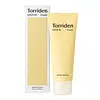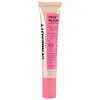What's inside
What's inside
 Key Ingredients
Key Ingredients

 Benefits
Benefits

 Concerns
Concerns

 Ingredients Side-by-side
Ingredients Side-by-side

Water
Skin ConditioningGlycerin
HumectantSimmondsia Chinensis Seed Oil
EmollientCaprylic/Capric Triglyceride
MaskingButylene Glycol
HumectantDipropylene Glycol
HumectantCetearyl Alcohol
EmollientEthylhexyl Palmitate
Emollient1,2-Hexanediol
Skin ConditioningGlyceryl Stearate
EmollientHydrogenated Poly(C6-14 Olefin)
EmollientHydrolyzed Hyaluronic Acid
HumectantSodium Hyaluronate
HumectantTrehalose
HumectantAllantoin
Skin ConditioningPanthenol
Skin ConditioningBetaine
HumectantAdansonia Digitata Seed Oil
EmollientHydrogenated Rice Bran Oil
Skin ConditioningCeramide NP
Skin ConditioningCeramide Ns
Skin ConditioningCeramide As
Skin ConditioningCeramide EOP
Skin ConditioningCeramide AP
Skin ConditioningPhytosphingosine
Skin ConditioningStearic Acid
CleansingCholesterol
EmollientSoluble Collagen
HumectantThymus Vulgaris Extract
PerfumingCamellia Sinensis Leaf Extract
AntimicrobialMentha Suaveolens Leaf Extract
AstringentCitrus Unshiu Peel Extract
MaskingPropanediol
Solvent2,3-Butanediol
HumectantVinyldimethicone
Hydrogenated Lecithin
EmulsifyingCetearyl Olivate
Sorbitan Olivate
EmulsifyingSucrose
HumectantCarbomer
Emulsion StabilisingTromethamine
BufferingXanthan Gum
EmulsifyingDisodium EDTA
Carthamus Tinctorius Flower Extract
Skin ConditioningEthylhexylglycerin
Skin ConditioningWater, Glycerin, Simmondsia Chinensis Seed Oil, Caprylic/Capric Triglyceride, Butylene Glycol, Dipropylene Glycol, Cetearyl Alcohol, Ethylhexyl Palmitate, 1,2-Hexanediol, Glyceryl Stearate, Hydrogenated Poly(C6-14 Olefin), Hydrolyzed Hyaluronic Acid, Sodium Hyaluronate, Trehalose, Allantoin, Panthenol, Betaine, Adansonia Digitata Seed Oil, Hydrogenated Rice Bran Oil, Ceramide NP, Ceramide Ns, Ceramide As, Ceramide EOP, Ceramide AP, Phytosphingosine, Stearic Acid, Cholesterol, Soluble Collagen, Thymus Vulgaris Extract, Camellia Sinensis Leaf Extract, Mentha Suaveolens Leaf Extract, Citrus Unshiu Peel Extract, Propanediol, 2,3-Butanediol, Vinyldimethicone, Hydrogenated Lecithin, Cetearyl Olivate, Sorbitan Olivate, Sucrose, Carbomer, Tromethamine, Xanthan Gum, Disodium EDTA, Carthamus Tinctorius Flower Extract, Ethylhexylglycerin
Water
Skin ConditioningGlycerin
HumectantCaprylic/Capric Triglyceride
MaskingSqualane
EmollientGlycereth-26
HumectantDipropylene Glycol
HumectantBetaine
HumectantTriisostearin
Skin ConditioningDipentaerythrityl Hexa C5-9 Acid Esters
Skin Conditioning1,2-Hexanediol
Skin ConditioningCeramide NP
Skin ConditioningCitrullus Lanatus Fruit Extract
Skin ConditioningTerminalia Ferdinandiana Fruit Extract
AntioxidantSodium Hyaluronate
HumectantCurcuma Longa Root Extract
MaskingSilica
AbrasiveBoerhavia Diffusa Root Extract
Skin ProtectingPinus Pinaster Bark Extract
AntioxidantVanilla Planifolia Fruit Extract
Skin ConditioningPropanediol
SolventPhytosphingosine
Skin ConditioningEicosapentaenoic Acid
EmollientSorbitan Oleate
EmulsifyingCaprylyl/Capryl Glucoside
CleansingPhospholipids
Skin ConditioningCetearyl Olivate
Sorbitan Olivate
EmulsifyingXanthan Gum
EmulsifyingCarbomer
Emulsion StabilisingSorbitol
HumectantPhosphatidylcholine
EmulsifyingDocosahexaenoic Acid
Skin ConditioningHydrogenated Polydecene
EmollientCetearyl Alcohol
EmollientSynthetic Fluorphlogopite
Sodium Acrylate/Sodium Acryloyldimethyl Taurate Copolymer
Emulsion StabilisingButylene Glycol
HumectantTetrasodium Glutamate Diacetate
Cholesterol
EmollientC14-22 Alcohols
Emulsion StabilisingPolyisobutene
Tocopheryl Acetate
AntioxidantSodium Stearoyl Glutamate
CleansingAlumina
AbrasiveC12-20 Alkyl Glucoside
EmulsifyingTriethylhexanoin
MaskingMica
Cosmetic ColorantTin Oxide
AbrasiveCI 77891
Cosmetic ColorantCI 77491
Cosmetic ColorantEthylhexylglycerin
Skin ConditioningWater, Glycerin, Caprylic/Capric Triglyceride, Squalane, Glycereth-26, Dipropylene Glycol, Betaine, Triisostearin, Dipentaerythrityl Hexa C5-9 Acid Esters, 1,2-Hexanediol, Ceramide NP, Citrullus Lanatus Fruit Extract, Terminalia Ferdinandiana Fruit Extract, Sodium Hyaluronate, Curcuma Longa Root Extract, Silica, Boerhavia Diffusa Root Extract, Pinus Pinaster Bark Extract, Vanilla Planifolia Fruit Extract, Propanediol, Phytosphingosine, Eicosapentaenoic Acid, Sorbitan Oleate, Caprylyl/Capryl Glucoside, Phospholipids, Cetearyl Olivate, Sorbitan Olivate, Xanthan Gum, Carbomer, Sorbitol, Phosphatidylcholine, Docosahexaenoic Acid, Hydrogenated Polydecene, Cetearyl Alcohol, Synthetic Fluorphlogopite, Sodium Acrylate/Sodium Acryloyldimethyl Taurate Copolymer, Butylene Glycol, Tetrasodium Glutamate Diacetate, Cholesterol, C14-22 Alcohols, Polyisobutene, Tocopheryl Acetate, Sodium Stearoyl Glutamate, Alumina, C12-20 Alkyl Glucoside, Triethylhexanoin, Mica, Tin Oxide, CI 77891, CI 77491, Ethylhexylglycerin
 Reviews
Reviews

Ingredients Explained
These ingredients are found in both products.
Ingredients higher up in an ingredient list are typically present in a larger amount.
1,2-Hexanediol is a synthetic liquid and another multi-functional powerhouse.
It is a:
- Humectant, drawing moisture into the skin
- Emollient, helping to soften skin
- Solvent, dispersing and stabilizing formulas
- Preservative booster, enhancing the antimicrobial activity of other preservatives
Betaine is a common humectant (a substance that promotes retention of moisture). It's known to be gentle on the skin and can help balance hydration.
This ingredient is best for improving hydration and soothing irritated skin. Studies also show it helps even out skin tone.
Fun fact: Betaine is naturally created in the skin and body. The kind found within cosmetic products can be either plant-derived or synthetic.
Another name for betaine is trimethylglycine.
Learn more about BetaineButylene Glycol (or BG) is used within cosmetic products for a few different reasons:
Overall, Butylene Glycol is a safe and well-rounded ingredient that works well with other ingredients.
Though this ingredient works well with most skin types, some people with sensitive skin may experience a reaction such as allergic rashes, closed comedones, or itchiness.
Learn more about Butylene GlycolThis ingredient is an emollient, solvent, and texture enhancer. It is considered a skin-softener by helping the skin prevent moisture loss.
It helps thicken a product's formula and makes it easier to spread by dissolving clumping compounds.
Caprylic Triglyceride is made by combining glycerin with coconut oil, forming a clear liquid.
While there is an assumption Caprylic Triglyceride can clog pores due to it being derived from coconut oil, there is no research supporting this.
Learn more about Caprylic/Capric TriglycerideCarbomer is a polymer of acrylic acid. Its main role is to create a gel consistency.
A high amount of carbomer can cause pilling or balling up of products. Don't worry, most products contain 1% or less of carbomer.
Ceramide NP is a type of ceramide and formally known as ceramide 3.
Ceramides are intercellular lipids naturally found in our skin that bonds dead skin cells together to create a barrier. They are known for their ability to hold water and thus are a great ingredient for dry skin.
Ceramides are an important building block for our skin barrier. A stronger barrier helps the skin look more firm and hydrated. By bolstering the skin ceramides act as a barrier against irritating ingredients. This can help with inflammation as well.
If you would like to eat ceramides, sweet potatoes contain a small amount.
Read more about other common types of ceramides here:
Ceramide AP
Ceramide EOP
Cetearyl alcohol is a mixture of two fatty alcohols: cetyl alcohol and stearyl alcohol. It is mainly used as an emulsifier. Emulsifiers help prevent the separation of oils and products. Due to its composition, it can also be used to thicken a product or help create foam.
Cetearyl alcohol is an emollient. Emollients help soothe and hydrate the skin by trapping moisture.
Studies show Cetearyl alcohol is non-toxic and non-irritating. The FDA allows products labeled "alcohol-free" to have fatty alcohols.
This ingredient is usually derived from plant oils such as palm, vegetable, or coconut oils. There is debate on whether this ingredient will cause acne.
Due to the fatty acid base, this ingredient may not be Malassezia folliculitis safe.
Learn more about Cetearyl AlcoholCetearyl Olivate is an emulsifier and texture enhancer. It is derived from the fatty acids of olive oil and Cetearyl alcohol, and is biodegradable.
As an emulsifier, it is used to prevent oils and waters from separating. It can also
Manufacturers use the name Olivem 1000. This ingredient has been found to preserve the natural microbiome of skin. Having a healthy microbiome helps keep our skin healthy and protects against harmful bacteria. This ingredient is grouped with Sorbitan Olivate under the name Olivem 1000.
Learn more about Cetearyl OlivateCholesterol is a class of organic molecules called lipids. It helps hydrate your skin and is essential to having a healthy skin barrier.
Our skin naturally contains cholesterol in the outermost layer. Besides cholesterol, it also contains ceramides and fatty acids. Cholesterol makes up about 1/4 of your skin's outer layer and barrier. Your skin barrier is responsible for keeping allergens and microbes out. Having a healthy skin barrier is also responsible for keeping your skin firm and plump.
Our bodies use cholestrol to create vitamin D, steroid hormones, and more.
Learn more about CholesterolDipropylene Glycol is a synthetically created humectant, stabilizer, and solvent.
This ingredient helps:
Dipropylene glycol is technically an alcohol, but it belongs to the glycol family (often considered part of the ‘good’ alcohols). This means it is hydrating and gentle on skin unlike drying solvent alcohols like denatured alcohol.
As a masking agent, Dipropylene Glycol can be used to cover the smell of other ingredients. However, it does not have a scent.
Studies show Dipropylene Glycol is considered safe to use in skincare.
Learn more about Dipropylene GlycolEthylhexylglycerin (we can't pronounce this either) is commonly used as a preservative and skin softener. It is derived from glyceryl.
You might see Ethylhexylglycerin often paired with other preservatives such as phenoxyethanol. Ethylhexylglycerin has been found to increase the effectiveness of these other preservatives.
Glycerin is already naturally found in your skin. It helps moisturize and protect your skin.
A study from 2016 found glycerin to be more effective as a humectant than AHAs and hyaluronic acid.
As a humectant, it helps the skin stay hydrated by pulling moisture to your skin. The low molecular weight of glycerin allows it to pull moisture into the deeper layers of your skin.
Hydrated skin improves your skin barrier; Your skin barrier helps protect against irritants and bacteria.
Glycerin has also been found to have antimicrobial and antiviral properties. Due to these properties, glycerin is often used in wound and burn treatments.
In cosmetics, glycerin is usually derived from plants such as soybean or palm. However, it can also be sourced from animals, such as tallow or animal fat.
This ingredient is organic, colorless, odorless, and non-toxic.
Glycerin is the name for this ingredient in American English. British English uses Glycerol/Glycerine.
Learn more about GlycerinPhytosphingosine is a phospholipid naturally found in our skin as a building block for ceramides.. It helps moisturize, soothe, and protect skin.
Phytosphingosine contributes to your skin's natural moisturizing factor (NMF). The NMF is responsible for hydration, a strong barrier, and plasticity. Our NMF decreases with age. Increasing NMF leads to more healthy and hydrated skin.
Studies show products formulated with NMF ingredients help strengthen our skin's barrier. Having a healthy skin barrier reduces irritation and increases hydration. Our skin barrier is responsible for having plump and firm skin. It also helps protect our skin against infection, allergies, and inflammation.
Fun fact: Phytosphingosine is abundant in plants and fungi.
More ingredients that help boost collagen in skin:
Learn more about PhytosphingosinePropanediol is an all-star ingredient. It softens, hydrates, and smooths the skin.
It’s often used to:
Propanediol is not likely to cause sensitivity and considered safe to use. It is derived from corn or petroleum with a clear color and no scent.
Learn more about PropanediolSodium Hyaluronate is hyaluronic acid's salt form. It is commonly derived from the sodium salt of hyaluronic acid.
Like hyaluronic acid, it is great at holding water and acts as a humectant. This makes it a great skin hydrating ingredient.
Sodium Hyaluronate is naturally occurring in our bodies and is mostly found in eye fluid and joints.
These are some other common types of Hyaluronic Acid:
Learn more about Sodium HyaluronateSorbitan Olivate is created from the fatty acids in olive oil and sorbitol.
This ingredient is an oil in water emulsifier. It helps stabilize a product by preventing oils and waters from separating. Sorbitan Olivate also helps hydrate the skin.
Manufacturers sell sorbitan olivate under the name OliveM 1000. OliveM 1000 a multifunctional ingredient. It is self-emulsifying. According to a manufacturer, OliveM 1000 does not disrupt natural skin biome.
Due to its olive oil base, this ingredient may not be fungal-acne safe.
Learn more about Sorbitan OlivateWater. It's the most common cosmetic ingredient of all. You'll usually see it at the top of ingredient lists, meaning that it makes up the largest part of the product.
So why is it so popular? Water most often acts as a solvent - this means that it helps dissolve other ingredients into the formulation.
You'll also recognize water as that liquid we all need to stay alive. If you see this, drink a glass of water. Stay hydrated!
Learn more about WaterXanthan gum is used as a stabilizer and thickener within cosmetic products. It helps give products a sticky, thick feeling - preventing them from being too runny.
On the technical side of things, xanthan gum is a polysaccharide - a combination consisting of multiple sugar molecules bonded together.
Xanthan gum is a pretty common and great ingredient. It is a natural, non-toxic, non-irritating ingredient that is also commonly used in food products.
Learn more about Xanthan Gum